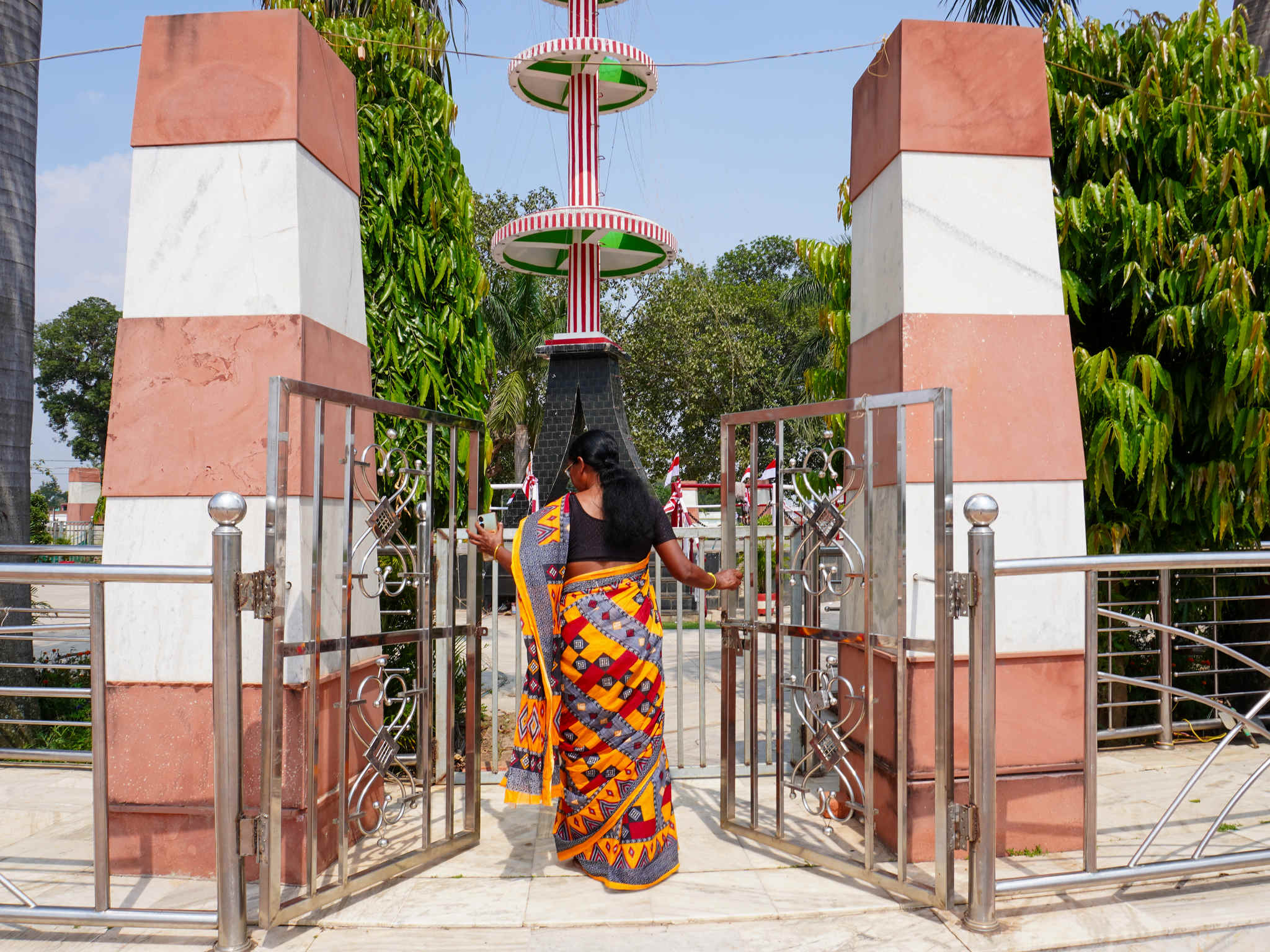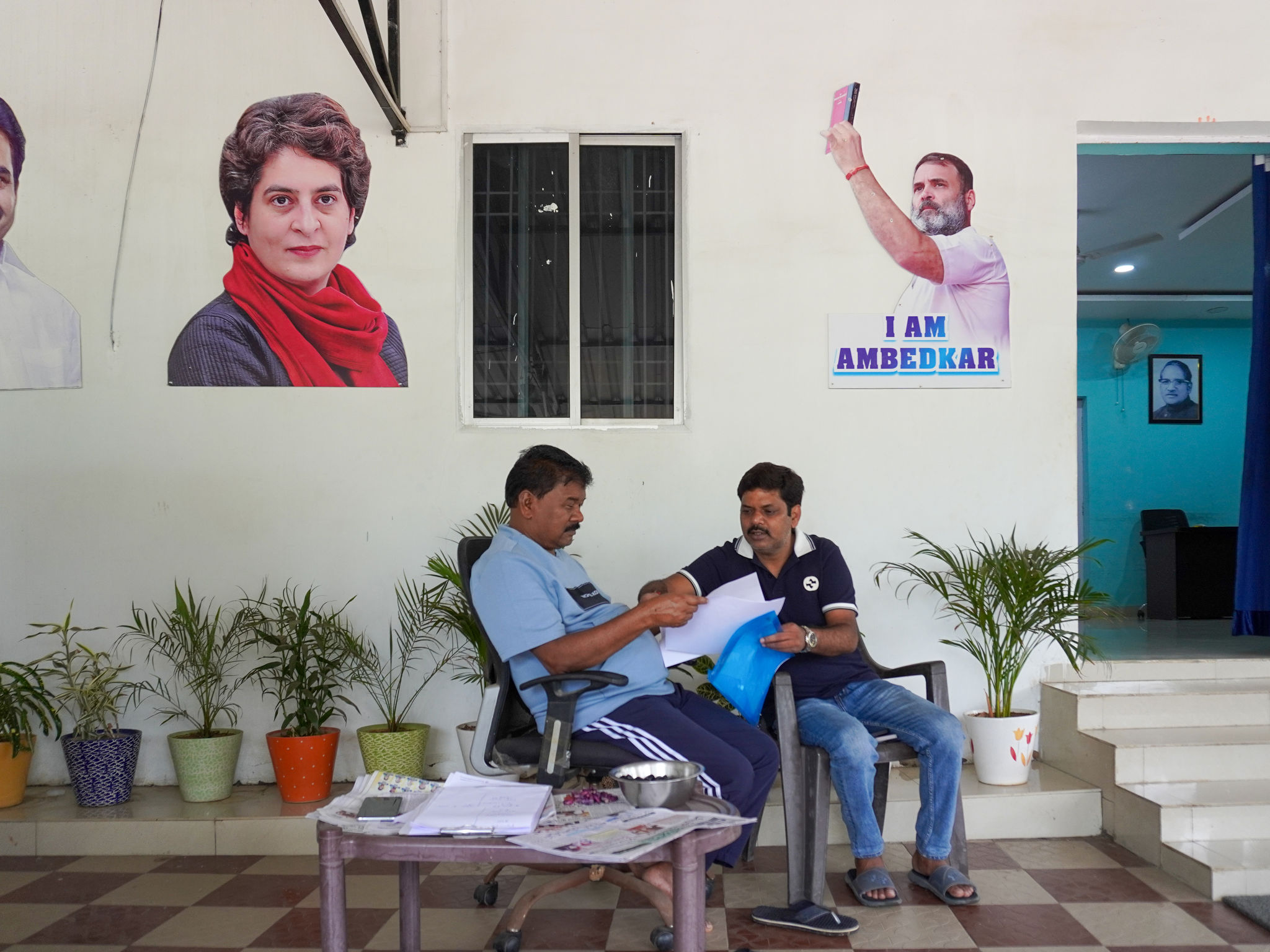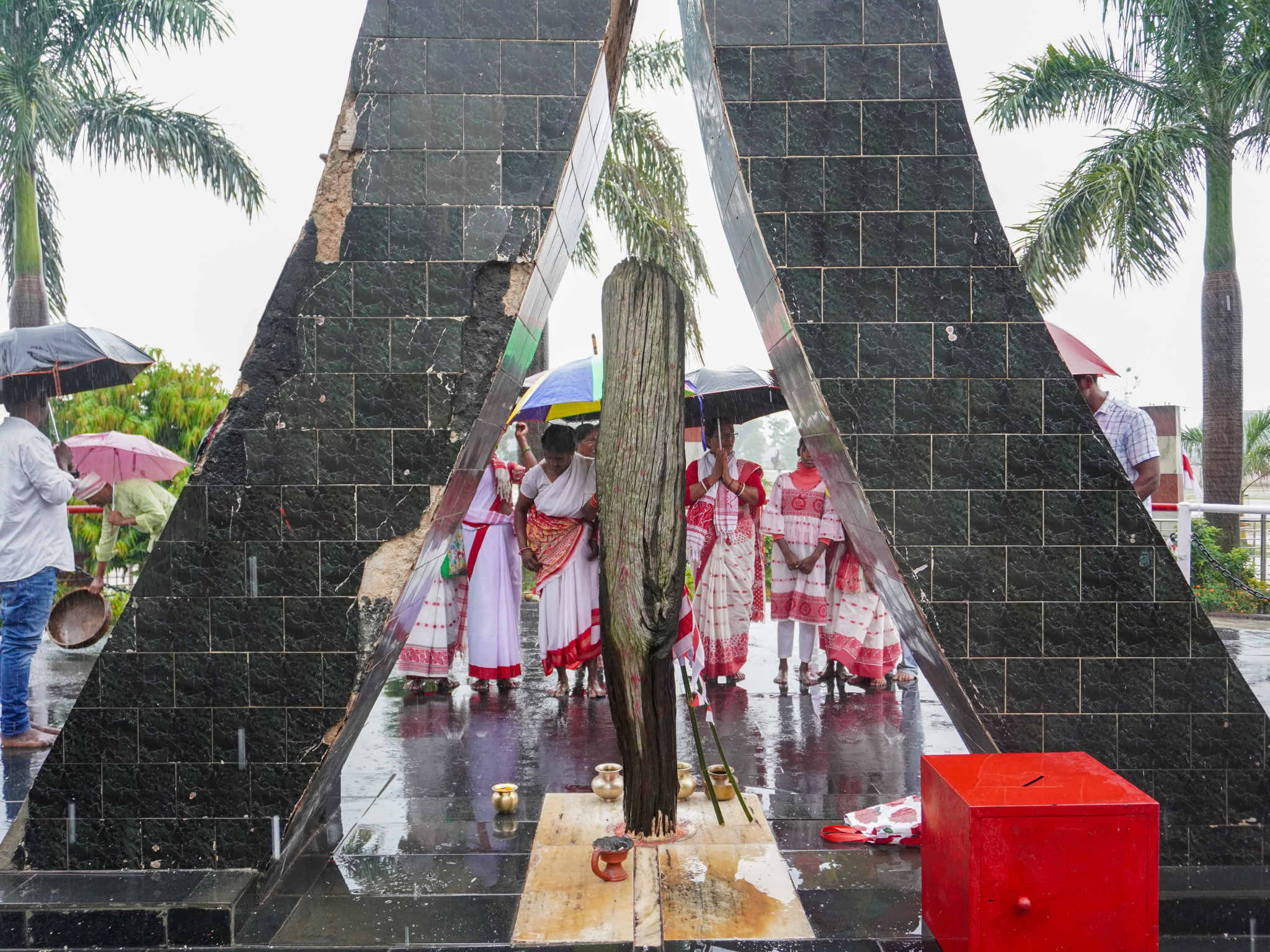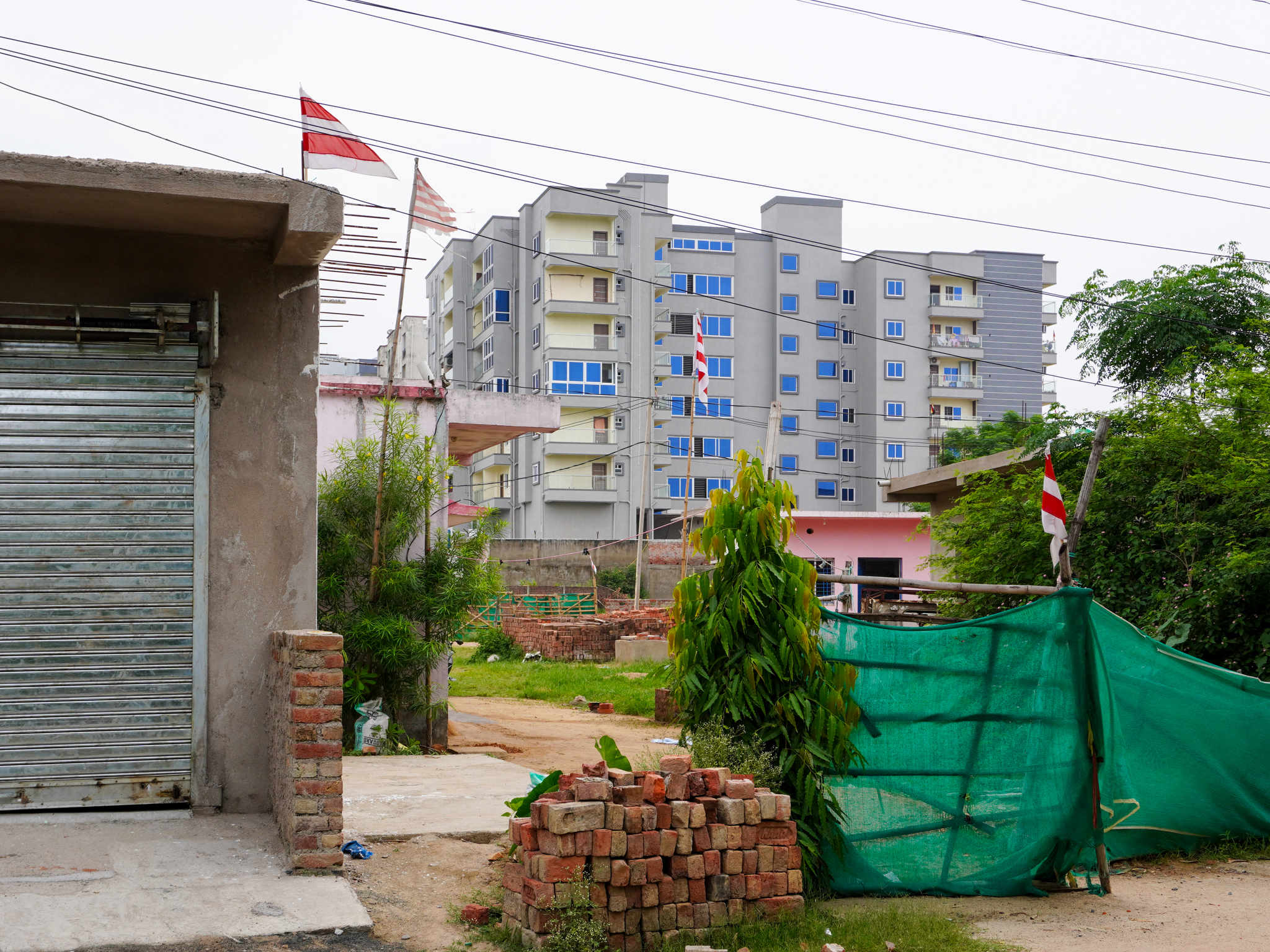
RANCHI, JHARKHAND, INDIA — Every time Kamle Oraon, 50, closes her eyes, she sees her mother scraping the bottom of a bowl to feed her four children.
“We were hungry most nights,” she says.
Many villages in the eastern Indian state, known for its dense jungles, had no sanitation, high malnutrition rates and unemployment. Public schools were rare.
But Christian missionaries opened schools even in the most remote areas during the colonial period.
Oraon went to one of these schools.
“They made me sing hymns, pray to Jesus Christ and even gave me a first name. » She pauses. “But I didn’t convert.”
Oraon is a Sarna – an ancient, nature-worshipping animist faith.



After India’s independence, the Hindu nationalist group Rashtriya Swayamsevak Sangh also began establishing schools, as well as hostels and hospitals, in remote areas. RSS leaders have repeatedly stated that they want to stop the spread of Christianity in these areas.
Today, facing pressure from Hindus and Christians, Sarnas wants their faith to be formally recognized, notably as a box to check in the next census in 2026. This push has put Christian and Hindu groups on edge, fearing losing their political base. When they band together, the Sarnas have the numbers needed to change election results.
Overall, one in four residents of the state of Jharkhand are called “Adivasi”, those who have been around since the dawn of time. There are 32 Adivasi groups, including big ones like Oraon, Santhal and Munda. Among these groups, many follow the Sarna faith, and over the past decade the battle for Adivasi religious identity has intensified.
According to a December 2024 survey by the Center for the Study of Developing Societies, 49% of Adivasis in the state who consider themselves Hindus voted for Prime Minister Narendra Modi’s Bharatiya Janata Party, and 44% of Christian Adivasis supported the opposition coalition in the November 2024 state Assembly elections.
But it was the Adivasis, who considered themselves neither Hindu nor Christian, who tipped the scales. The opposition, led by the pro-Sarna Jharkhand Mukti Morcha, came to power in a coalition including the Congress Party. They won most of the constituencies where official recognition of the Sarna religion was a major campaign issue. Modi’s BJP won in only one of these constituencies.
“We realized that we have been silent for too long,” says Bandhu Tirkey, a Congress Party politician who is campaigning for a separate designation of Sarna in the next census.



An ancient religion
Counting Sarna’s members is not easy, but according to the last Indian census in 2011, there were just over 4 million.
Currently, the census lists six religions: Hinduism, Islam, Christianity, Sikhism, Jainism and Buddhism. The others, including Sarna, are grouped under “others”. The Sarna want their own designation.
In the 19th and 20th centuries, Christian missionary groups spread into the jungles of central India, establishing schools and proselytizing. After India’s independence in 1947, the RSS began setting up schools, hostels and hospitals in forests, claiming that Adivasis were originally Hindus. The victims were the various animist faiths practiced by Adivasi groups.
While Adivasis claim their ancestors practiced nature worship, decades of Hindu and then Christian influences have allowed their rituals and practices to borrow from those religions. Idols of Hindu and Christian deities often sit in homes in Sarna.
“Many people started calling themselves Hindus or Christians and forgot their roots in the Adivasi faith,” says Bandhan Tigga, a priest from Sarna.
But there has been a return to the old ways of worship. Most of Sarna’s stalls, the religion’s places of worship, have only sprung up in recent years, says Radhika Borde, a lecturer at the University of Leeds who specializes in social movements and indigenous religions.
This change worries Hindu and Christian leaders.
Kameshwar Sahu, a regional leader of Vanvasi Kalyan Ashram, a Hindu group belonging to the RSS, claims that all Adivasis were originally Hindus.
“Their culture is closer to Hindu culture than to Christianity,” he says.
Sahu’s organization has spent decades doing what it calls the “reconversion” of Adivasi Christians to Hinduism.
The Rev. Theodore Mascarenhas, general secretary of the Jharkhand Regional Bishops’ Council, disagrees. Adivasis are not Hindu, he says.
“The Sarna have their own faith, and they should be able to maintain their identity,” he said, rejecting the allegation that Christians are “inducing” Adivasis to convert.



Sarna stalls take root
About ten years ago, Oraon walked about 12 kilometers (7 miles) to the village of Choreya. Something in her told her to establish a Sarna factory there. The Sarna object of worship, usually a tree trunk, is also called Sarna.
In the village, Oraon chose a large tree trunk and began to worship it, but the local men chased her away with sticks.
“They didn’t want another religion in their backyard,” she explains.
Without being discouraged, she returned at regular intervals to pray to the Sarna she had established. Eventually, the women of the village began to join her and the Sarna gained strength.
“At a prayer meeting, you can see women shaking vigorously. Some are banging their heads on the ground. Some are chanting non-stop when they enter a Sarna stall,” says Borde, a professor at the University of Leeds.
People say women are “possessed” when they enter a Sarna stall, she said, using a term for the physical and psychological transformation women experience when they enter what they consider a divine space.
“In many situations, it’s a way for women to assert their opinions in otherwise male-dominated societies,” Borde explains.
When women claim that the divine speaks through them and that the man of the house should stop beating them, men usually obey.
Women pray in a sarna stal, where they often experience physical and spiritual transformations that strengthen their voice in male-dominated communities.
It is common in Hinduism and Christianity for men to be told that their god can speak through them.
“But Sarna gives this power to the women of the house,” Borde says.
Today, most Adivasi villages prominently feature a Sarna stall.
Once a Sarna stall is established, men and women don white and red clothing, carry small brass vessels, and pray there every Thursday. White and red are the colors of peace and resistance respectively.
“We are always peaceful,” Tigga says, “but if we have to resist outside forces to save our religion and identity, we won’t think twice. »
Across Jharkhand, red and white Sarna flags fly from the tops of houses. Often they are flown next to saffron flags to signify that the locals are also Hindu.



Sarna stal and land conflicts
The Sarna faith also challenges norms beyond the home.
Sarna stalls are usually found in a large open field, where people gather to sing, dance and congregate. The community does not authorize the cutting of trees in these spaces.
“We love nature. How can we allow its desecration?” asks Tigga, the priest of Sarna.
Setting up factories in Sarna is a way for Adivasi people to regain ownership of their land, Borde explains.
“The establishment of Sarna stals also acts as an eco-movement,” says Nandini Tank, researcher and founder of Adivasi Geotags, which aims to geotag all Adivasi sacred spaces in Jharkhand.
Across the state, Sarna factories have come into conflict with development projects.
In 2022, a flyover project was launched at Sitamoli on the outskirts of Ranchi. Adivasi groups took to the streets, blocking road traffic for days in protest, saying the bridge was being built over their Sarna factory.
“Would it be acceptable if a flyover was built over a temple or church?” asks Tigga.
The viaduct was still built.
“If we have the political strength, they will not be able to muzzle our voices like they did with the flyover,” says politician Tirkey.
Oraon goes from village to village in Mandar block of Ranchi district to discuss with villagers the possibility of identifying themselves as Sarna in the next census. “Even if you are Christian or Muslim now, I urge you to be faithful to your ancestors,” she told them.
Although she says Hindu groups pose the greatest threat to Sarna’s faith, she uses their term for “reconversion”: ghar wapsi.
“I oversaw the reconversion (in Sarna) of more than 50 families in the village of Malti alone,” she says. “Sometimes we re-convert those who converted to Hinduism or Christianity. Sometimes we just remind them of their original faith.”




